At the center of this millennium-old civilization lies Tibet, or “the Land of Snows” as it is known to its inhabitants — an area roughly the size of Western Europe with a long history of its own native languages, laws, literature, architecture and arts, music and medicine, culture, customs and governance, for most of the past 1,300 years.
Rimmed by the high mountains of the Himalayas to the south, and a sweep of immense deserts and empty steppes to the north, the Tibetan plateau’s harsh climate and high altitude long made Tibet a safe haven for a hardy people, and a shelter for their rich culture.
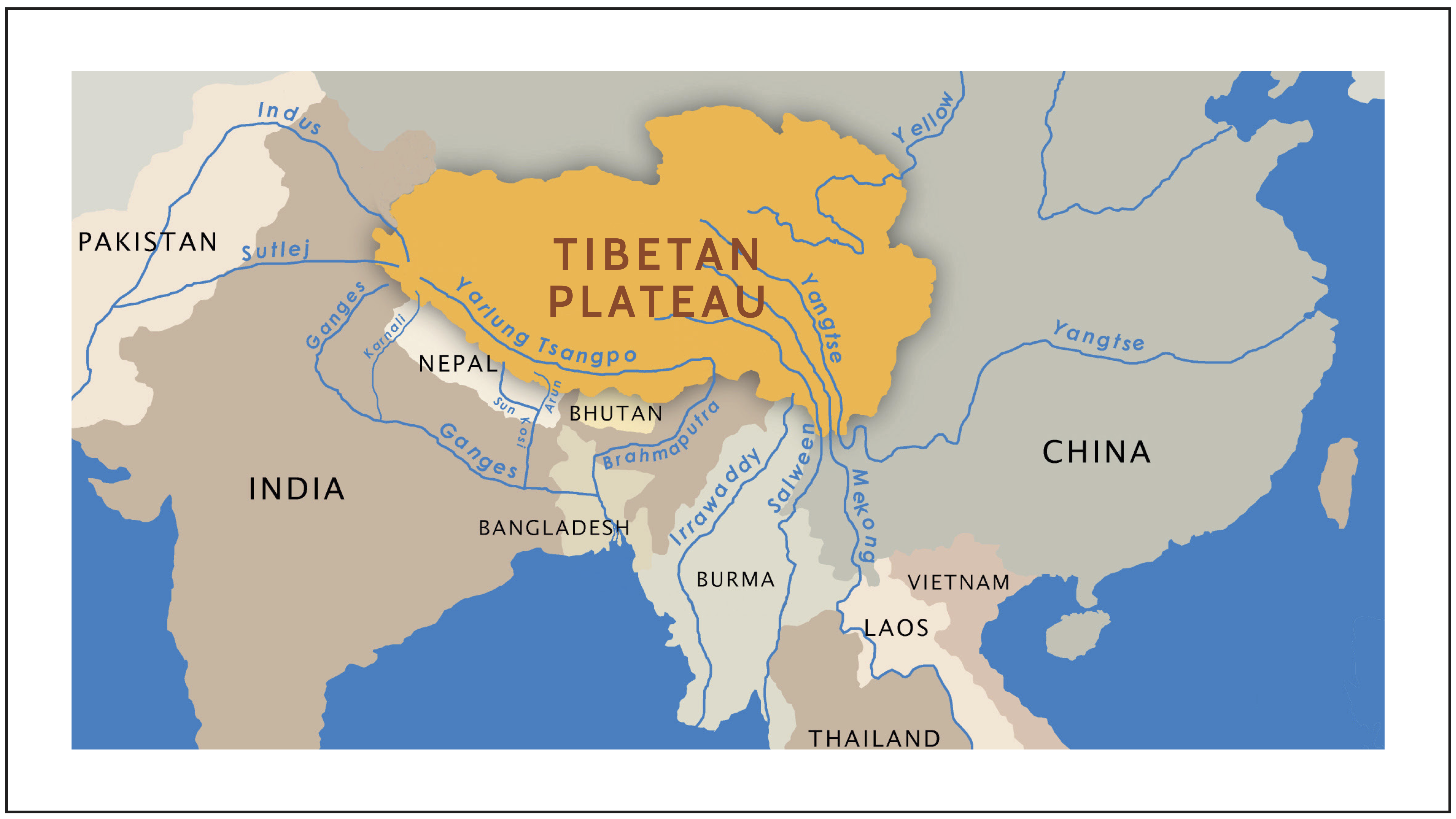
The Tibetan Plateau — the world’s highest plateau, at an average elevation of 14,000+ ft. — and the world’s largest plateau, stretching 1,600 miles from east to west, and covering nearly one million square miles.
This dynamic culture emerged from the plateau in the 7th century CE, during the reign of the 33rd king of the Yarlung Dynasty, Songtsen Gampo — known today as the first great Dharma King of Tibet, credited with initiating the creation of the Tibetan script, and its use to record the first Tibetan literary works and translations, court records, laws and constitution.
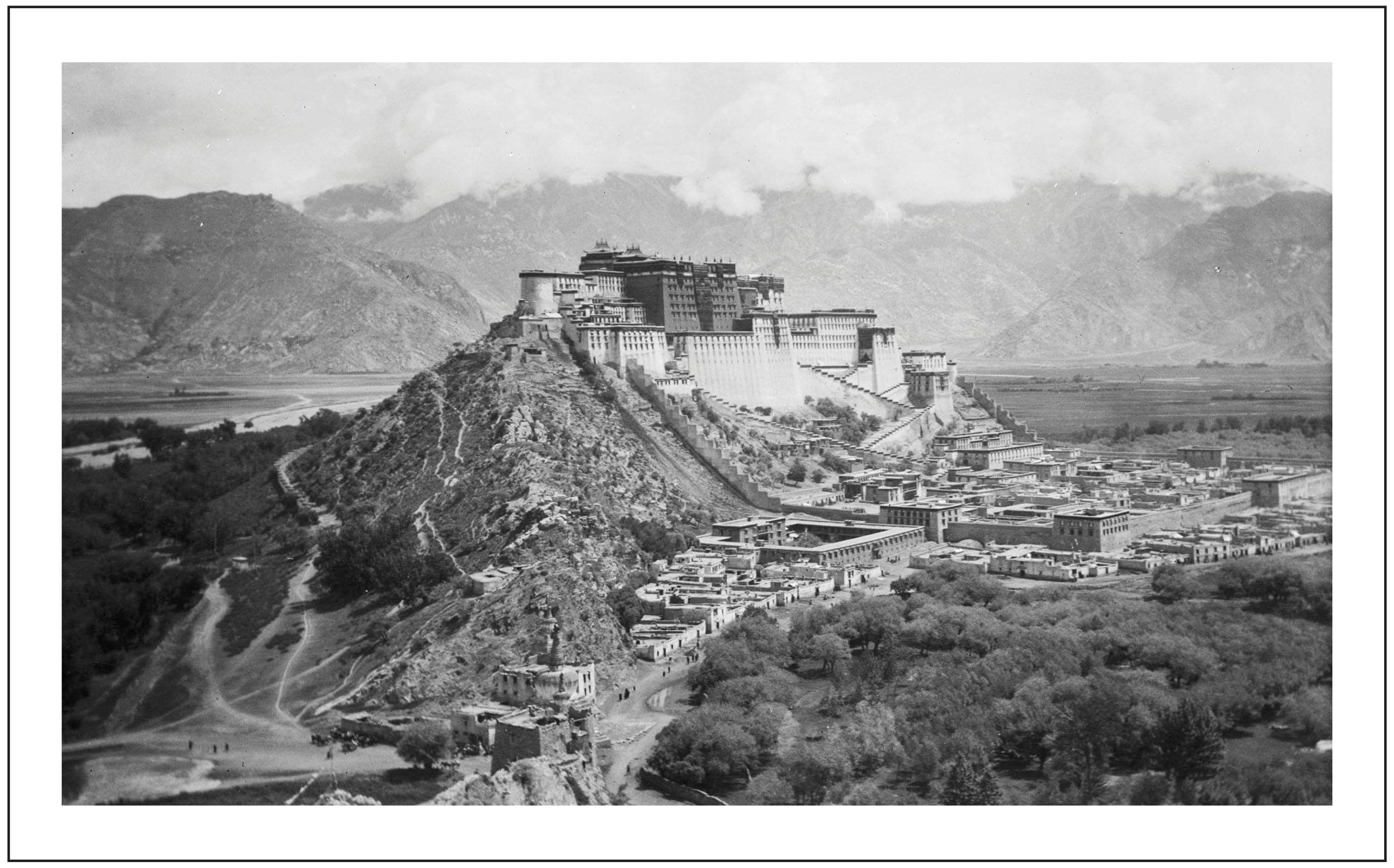
The Potala (above) in Lhasa, Tibet, originally the site of a palace built in 637 CE by Songtsen Gampo, the 33rd king and unifier of Tibet.
Bolstered by an unbroken lineage of learning brought by Buddhist monks and scholars from already-ancient monasteries in India, Tibetan culture blossomed — spreading outward from the central Tibetan areas of Ü, Tsang, Amdo and Kham, growing over time to encompass a vast area of Asia, and include many diverse peoples living beyond the high plateau at its heart.
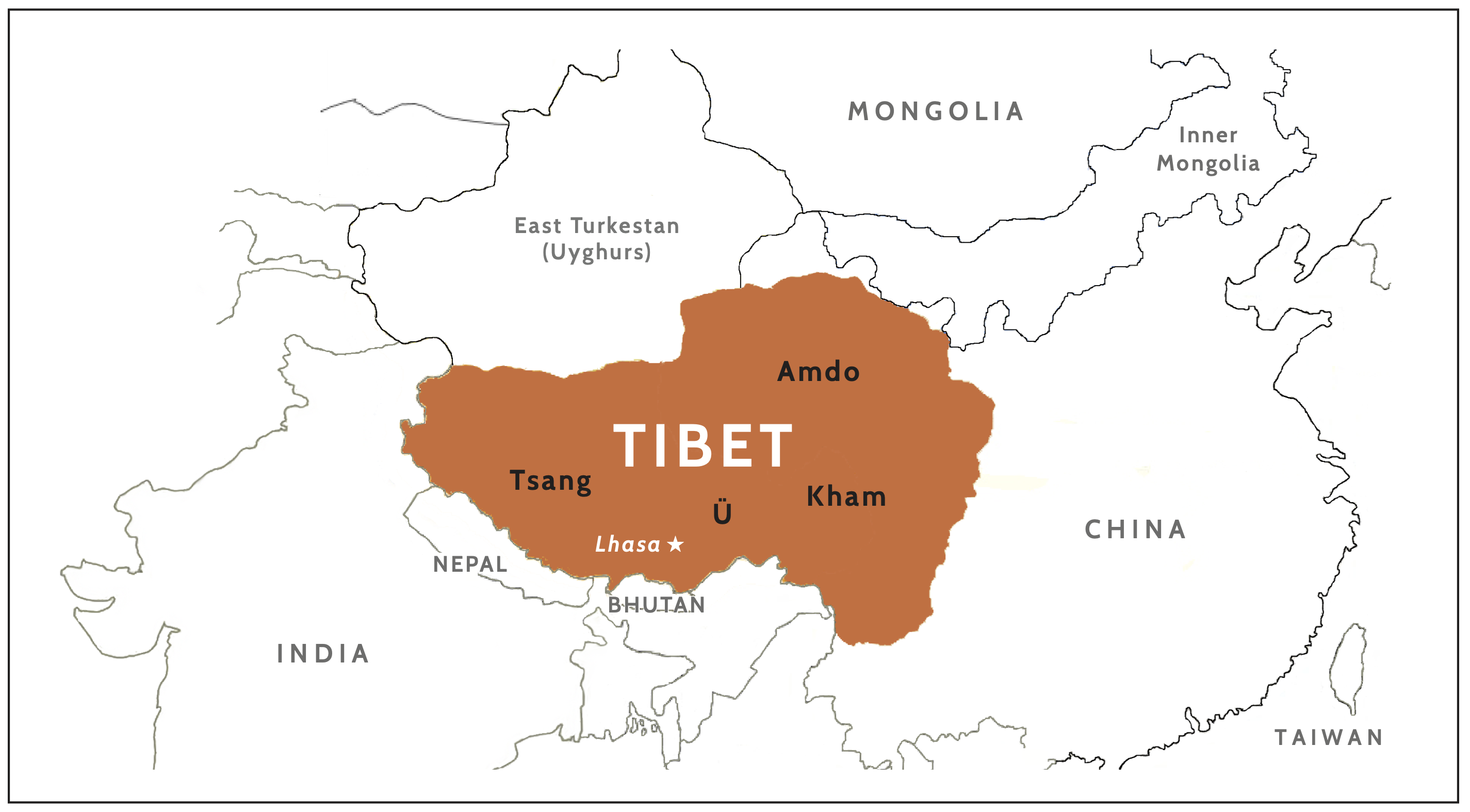
The heartland of Tibetan culture, Central Tibet: Ü, Tsang, Amdo, and Kham
Ranging first over the Himalayas into the nearby mountain regions of northern India, Bhutan, Dolpo, Mustang, Nepal, Sikkim and Tawang to the south, and Baltistan, Kinnaur, Ladakh, Lahaul and Spiti to the west, Tibetan Buddhist culture then crossed the high plateaus of inner Asia, to bloom in the great lands of Mongolia — later reaching north into what is now Russia, to take root in Buryatia, Tuva, and even as far west as Kalmykia, bordering the North Caucasus region of Eastern Europe.
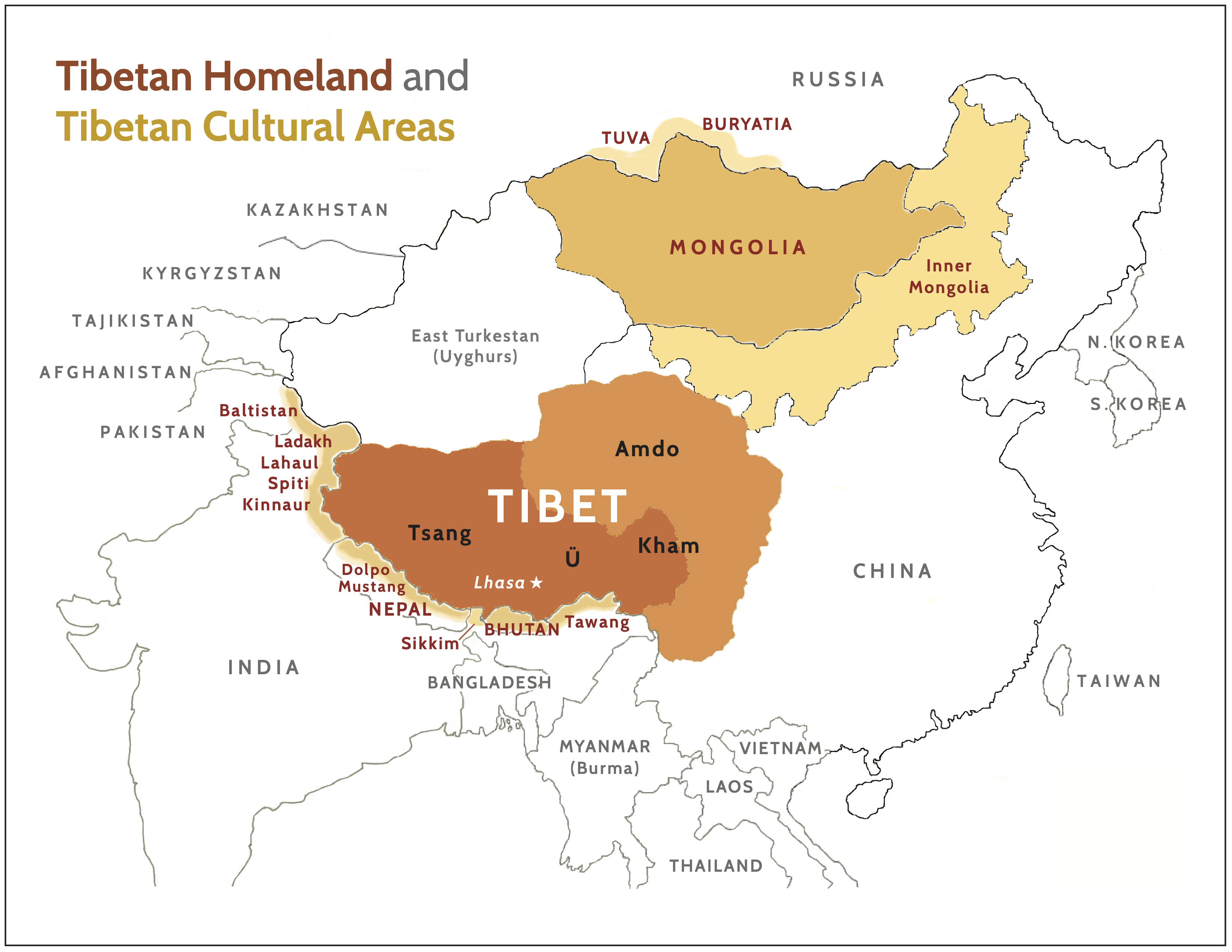
The lands and peoples sharing Tibetan cultural heritage
Throughout the many lands marked by Tibetan culture, great monasteries and renowned teachers of Tibetan Buddhism rose up — one of whom so impressed the 16th century Mongol ruler Altan Khan that he called him Dalai Lama or “Ocean of Wisdom.”
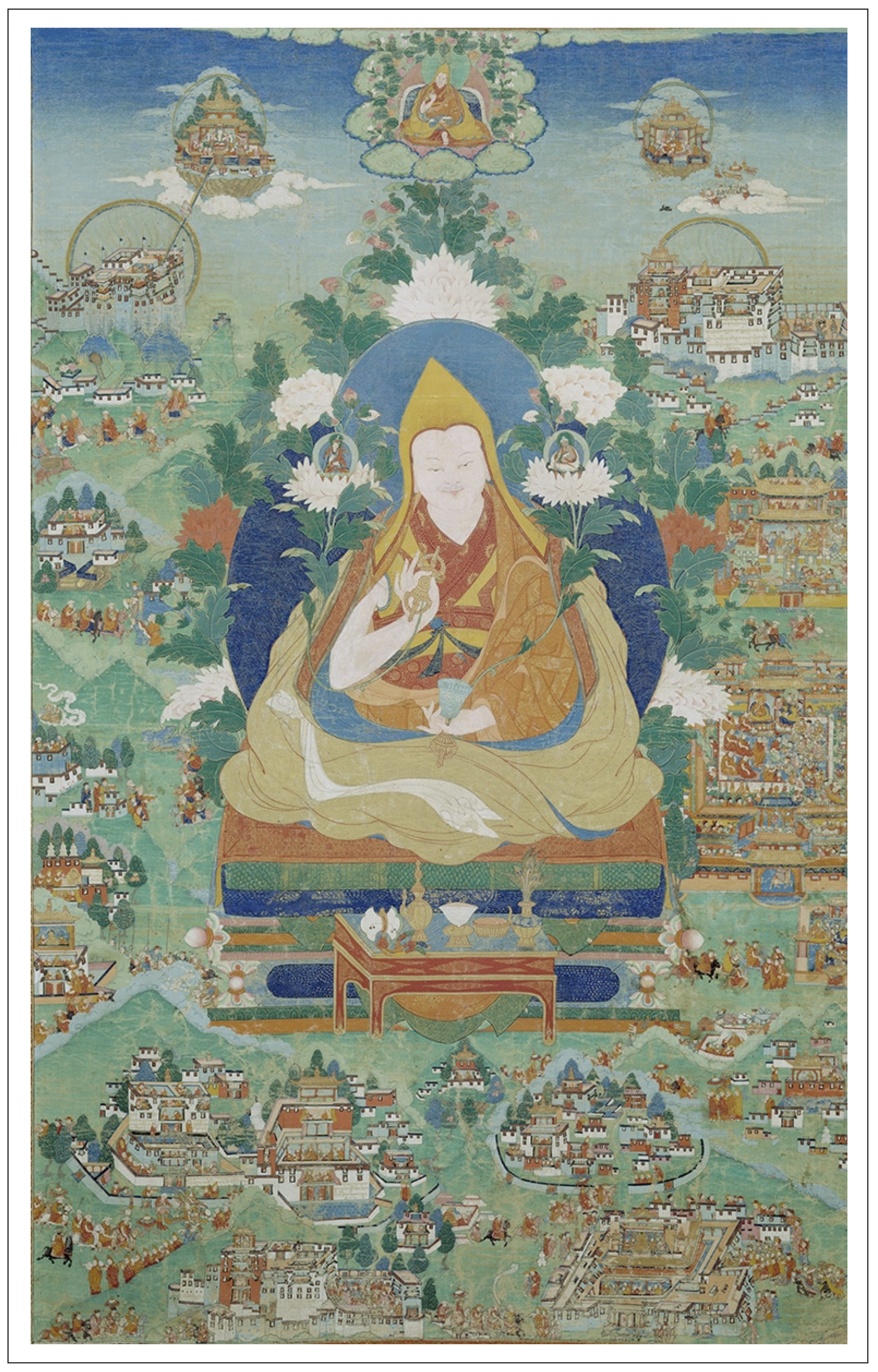
Ngawang Lobsang Gyatso, the Fifth Dalai Lama (1617–1682)
With the Mongols won over, a successor known as the Great Fifth Dalai Lama secured a stable, reunified Tibet by the 17th century. Fostered by the relative peace which followed for the next three hundred years, Tibetan civilization flowered throughout the high mountains, plateaus and steppes of Inner Asia.
The peoples of these lands today represent the living legacy of a millennium-old civilization, and the lasting influence of Tibetan culture — a culture that produced centuries of vibrant art, libraries that gathered great troves of ancient knowledge, and a flowering of higher learning in monastic universities, some of which were, at their height, the largest in the world.
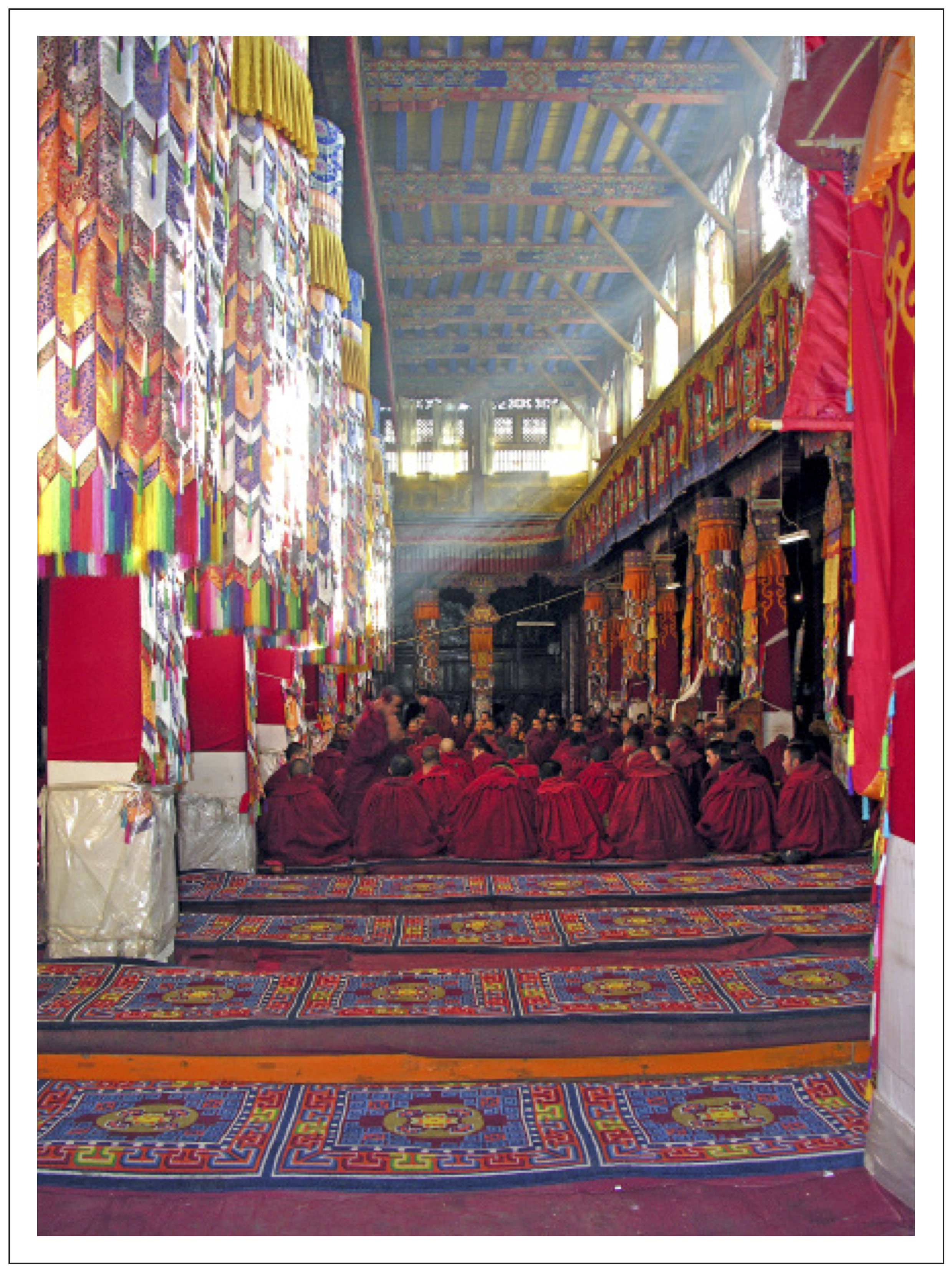
Tibetan Buddhist Monks in the great assembly hall at Drepung Monastery, one of the three great Gelugpa monasteries in Lhasa, Tibet. A 600-year old university, Drepung was, at its height, host to as many as 10,000 monks coming from across Asia to undertake the monastery’s 20-year program of study towards a Geshe degree, equivalent to a Western PhD.
A THOUSAND YEARS OF CULTURE…
By the dawn of the 20th century, millions beyond the Land of Snows — in many lands across a swath of Asia rivaling the sizes of India and China — looked to Tibet, and the Dalai Lamas, for spiritual leadership.
Long remote, sparsely populated, and for centuries a mysterious land of legend to far-off foreigners, the homeland of Tibetan culture was nonetheless recognized as a sovereign land and an independent nation long before the Chinese invasion of 1949, with its own currency and stamps, its own national flag and passports, and its own cabinet ministers serving in a government that signed international treaties and maintained diplomatic relations with neighbouring countries.
…UNDER ATTACK ACROSS ASIA…
After flourishing for a thousand years, Tibetan culture has suffered a half century and more of repression in the many lands where it had spread. Beginning in the late 1920s and 1930s, Tibetan monasteries were seized and shuttered throughout Soviet Russia and the Mongolian People’s Republic — followed by the brutal suppression of Tibetan Buddhists in those nations and in Inner Mongolia — eventually leading to the Chinese Communist invasion and occupation of the homeland of Tibetan culture itself, beginning in 1949.
The unprovoked invasion and violent occupation of Tibet launched in the middle of the 20th century signaled a savage assault that resulted in the death of at least 1 million Tibetans, wreaked havoc on Tibet’s treasured cultural heritage, and saw the ransacking of Tibet’s temples, the destruction of more than 6,000 monasteries — the cultural centers of Tibetan life — and the closure of Tibet’s famed universities and even its ancient libraries and printing houses.
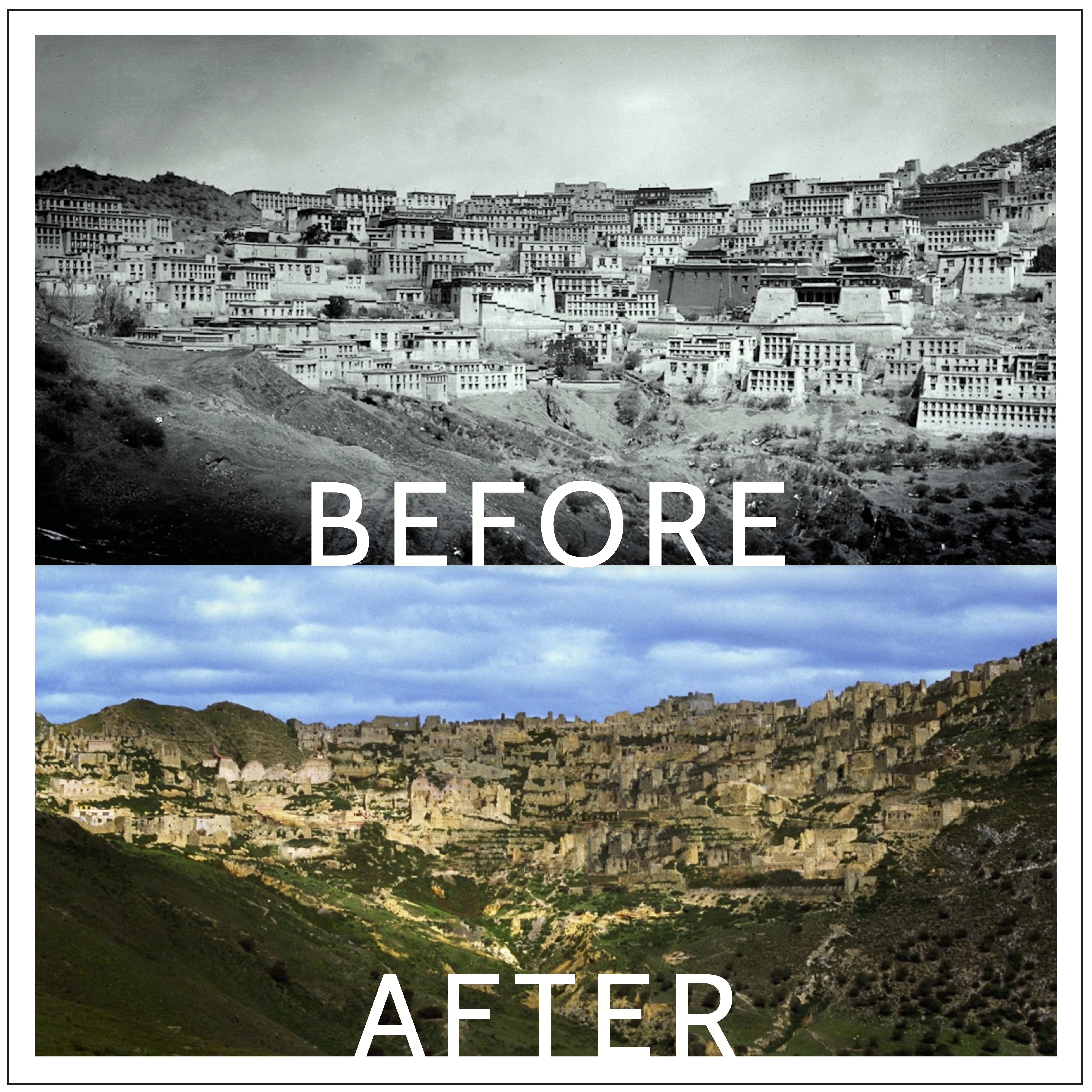
Ganden Monastery, shown before and after the invasion of Tibet. Founded in 1409 by the revered monk, philosopher, scholar, meditator and poet Je Tsongkhapa, Ganden was one of Tibet’s largest and most famous monastic universities — with two main colleges, 20 chapels and 24 dormitories housing 5,000 monks. Ganden Monastery was destroyed in 1959 by the invading People’s Liberation Army — and later reduced to rubble using dynamite during the Chinese Communist Party’s “Cultural Revolution.“
…THREATENED IN ITS HOMELAND…
In the wake of these brutal efforts to eradicate Tibet’s hallowed heritage, and a half-century of the continuing suppression of the Tibetan language, culture and religion, today’s Tibetans find themselves increasingly marginalized in their own homeland — facing daily challenges to their hopes to retain their distinctive cultural identity, educate their children in their own native language, teach them their history, pass along their traditions, and freely practice their religion.
…RECOVERING IN MONGOLIA…
In newly-independent Mongolia (formerly Outer Mongolia), Tibetan Buddhism is once again openly practiced without fear, its unique lineages having survived underground for nearly 70 years, with its monasteries being rebuilt with the help of the current Dalai Lama and others — a tribute to the ties which still bind these peoples together.
…TAKING SHELTER IN NEIGHBORING COUNTRIES AND HIMALAYAN REGIONS…
Beyond the Land of Snows, the legacy of Tibetan culture lives on in nearby remote Himalayan regions, ranging from Ladakh and Mustang to Sikkim and Tawang — and in the kingdom of Bhutan, which has entered the 21st century with its millennium-old Buddhist culture thriving, while Bhutan thoughtfully adapts to the changes and challenges of the modern world.
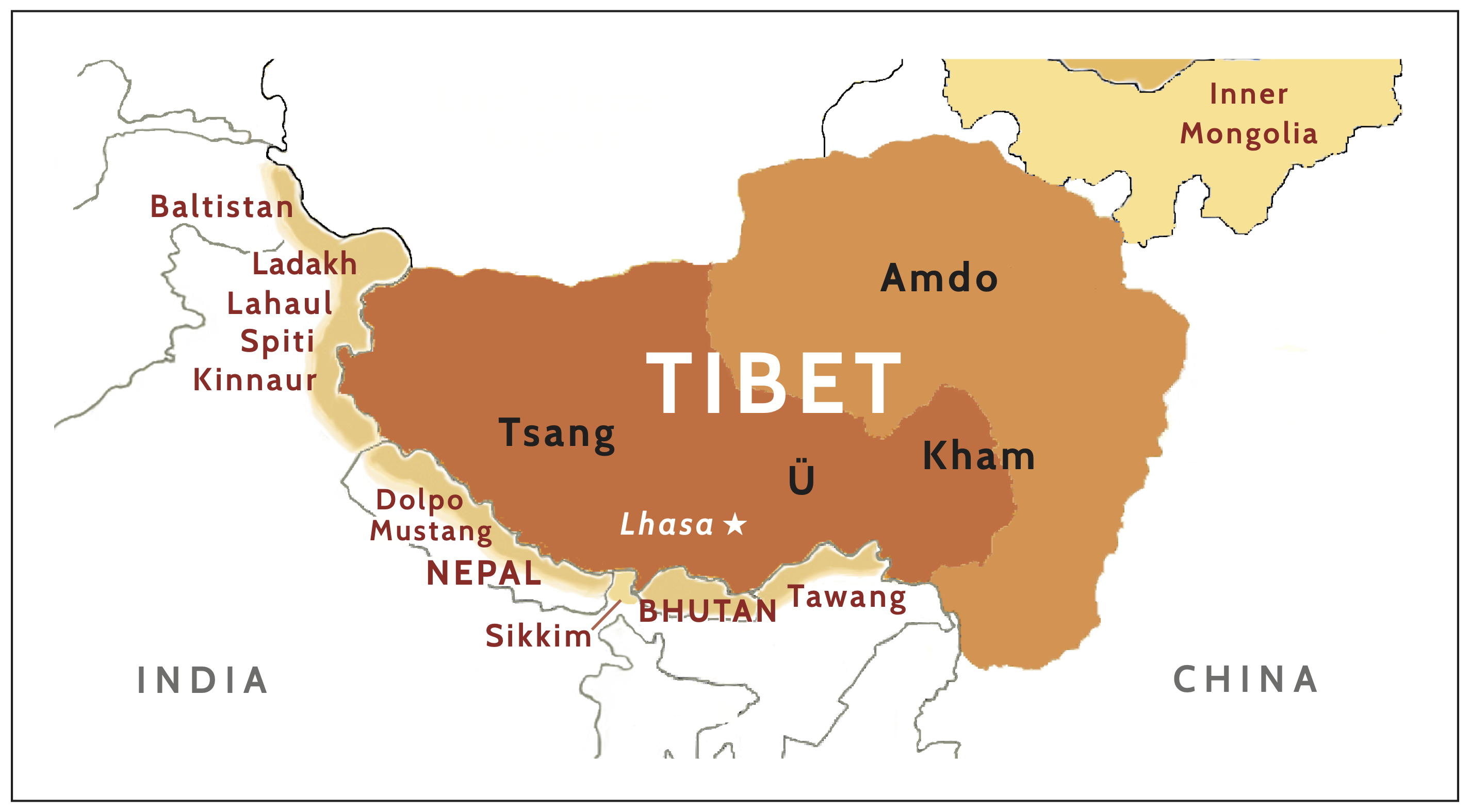
Tibet and Himalayan Tibetan Buddhist cultural areas
…PRESERVING TIBETAN BUDDHISM IN NEPAL…
And along the rim of the world’s highest mountain range, Tibetan Buddhism lives on in the peaks and valleys of Nepal, home to the world-famous Sherpas and a rich array of other Tibetan Buddhist peoples.
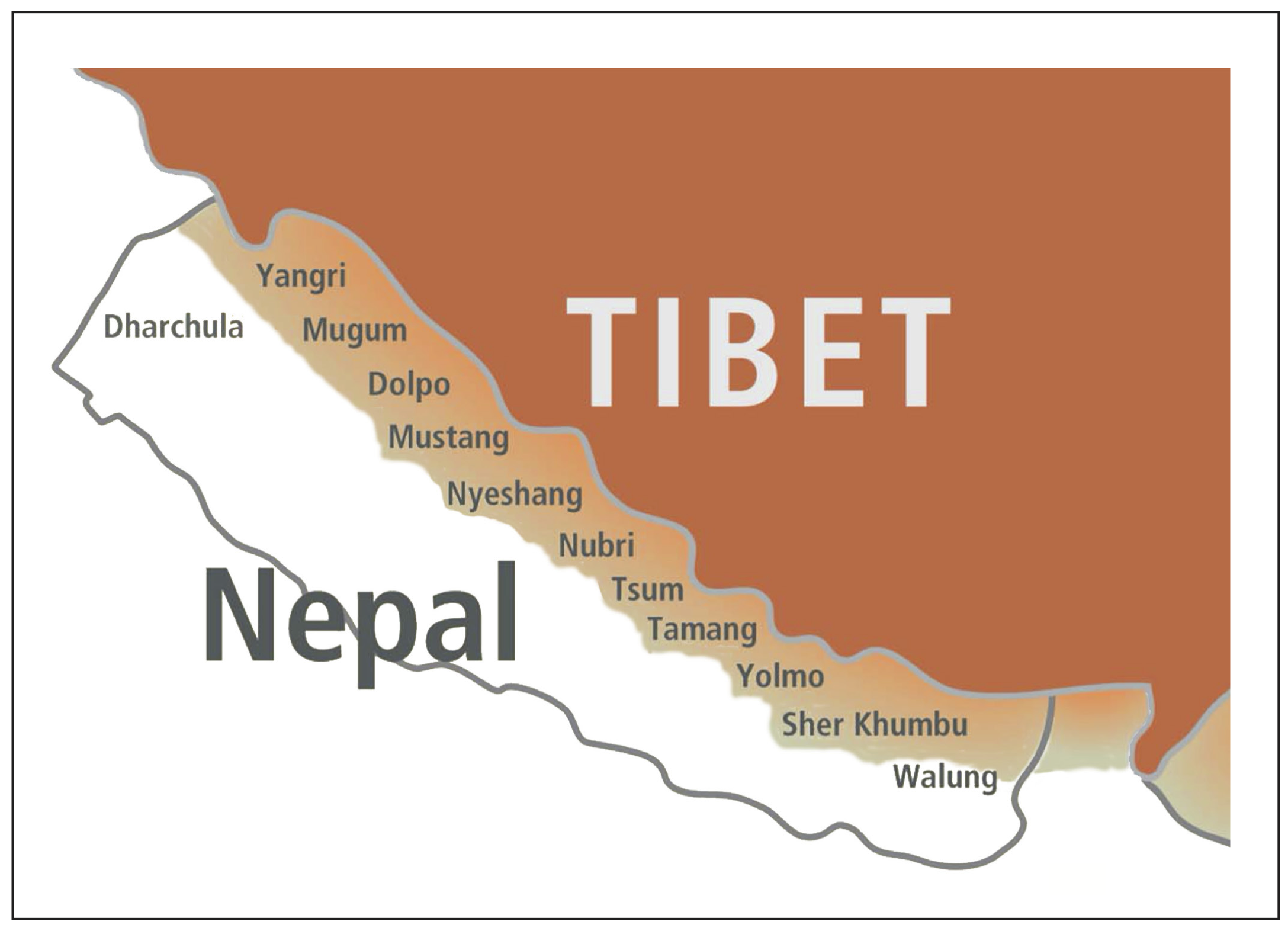
Ethnic Tibetan peoples and Tibetan Buddhist cultural areas in Nepal
…AND REBUILDING IN EXILE
In India, Nepal and Bhutan — and in the many nations around the world which have welcomed Tibetan refugees — Tibetans living in exile from the Land of Snows continue to work to rebuild their community and protect their living culture — creating, from scratch, vital new institutions to educate Tibetan children, resettle refugees and provide them health care, restore a working representative government, recreate ravaged temples, monastic universities, lost libraries and shuttered schools of traditional Tibetan medicine, and support efforts to preserve the many aspects of their threatened culture, ranging from traditional Tibetan performing arts to thangka painting.
ADDITIONAL RESOURCES
For those interested in learning more about the deep and rich history of Tibetan culture, as well as the many challenges to its future survival, our Resources page offers links to these resources:
• In-depth articles from the program book accompanying “Tibetan Culture Beyond the Land of Snows,” the 2000 Smithsonian Institution exhibition produced in partnership with the Conservancy for Tibetan Art & Culture.
• Organizations supporting the preservation of Tibetan culture
• Academic and online resources for exploring varied aspects of historic and contemporary Tibetan culture.
There are many ways you can help Tibetans preserve their living culture for the generations to come. Each of us can do something. Big or small, your help can make a difference.
